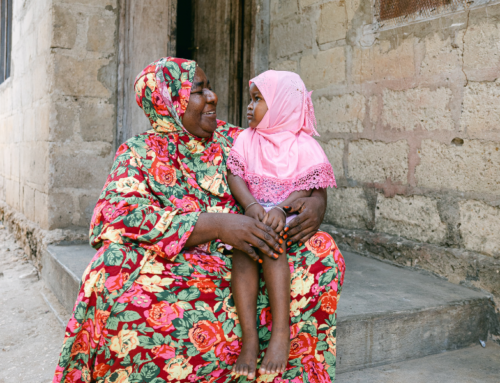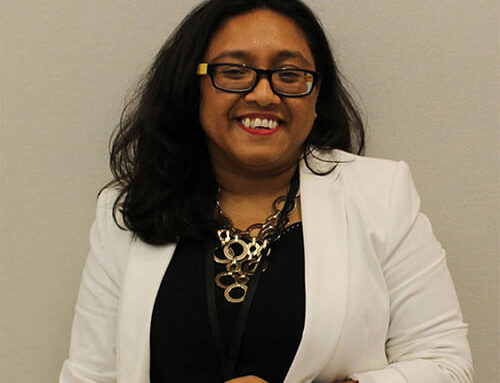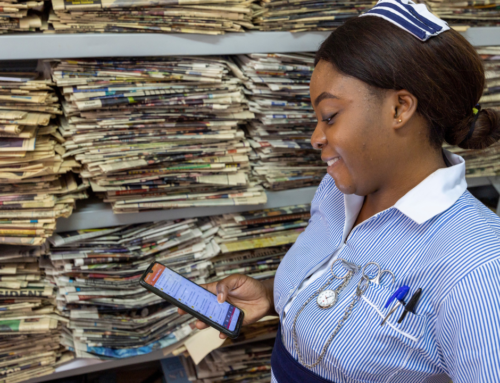
Amref Health Africa is among the first organizations in Uganda to highlight the condition of obstetric fistula, a hole in the birth canal often caused by prolonged or obstructed labour without access to needed medical care. The devastating birth injury leads to incontinence. Women and adolescent girls who are living with obstetric fistula are often ostracized – unable to go to school, work or even leave their homes.
The Ministry of Health in Uganda approached Amref in 2004 to support the government to provide surgery for women and adolescent girls living with obstetric fistula. At that time, Amref Health Africa flew in specialized surgeons to provide surgery to more than 200 women and adolescent girls. The very first camp was held in Arua district at the regional referral hospital. Seventeen years later, Amref Health Africa continues to provide free obstetric fistula surgery to women and adolescent girls through specialized medical outreaches. Support our work to provide free surgery for obstetric fistula survivors.
For International Day to End Obstetric Fistula, we spoke to Emmanuel Ebitu, Program Manager for Specialized Medical Outreaches for Amref Health Africa in Uganda to find out more about this essential work. (The interview has been edited for length and clarity)
1. In your view, what has Amref Health Africa in Uganda achieved as an organization in its focus on obstetric fistula?
Amref Health Africa, the Ministry of Health and partners have achieved a lot over the past 17 years. When we first started this program, Amref Health Africa and our air evacuation service, AMREF Flying Doctors, in collaboration with the Ministry of Health, had to invite fistula surgeons from Kenya to carry out surgeries in Uganda. At that time, Uganda did not have obstetric fistula surgeons. Over the years, Amref supported the training of Ugandan doctors as fistula surgeons. Today, the trained surgeons continue to provide services in various hospitals across Uganda. In areas like northern Uganda, where some of the first trained doctors are based, the backlog of women in need of obstetric fistula surgery has reduced due to the increased access to fistula health care services through medical camps and routine surgeries provided at one of the hospitals there.
2. Why has obstetric fistula persisted in Uganda?
Teenage pregnancy, delay in seeking obstetric care during childbirth, poor quality of delivery services and non-attendance of pre- and post-natal care are some of the strong factors leading to new cases of obstetric fistula. This is worsened by poverty, child marriages, school dropout and cultural beliefs. Addressing the issue requires a multi-sectoral approach involving communities, and political, religious and opinion leaders to address the root causes of obstetric fistula. The treatment backlog remains because of limited access to surgery as women who live with fistula are usually young, poor, and living far from specialized health services. Women and adolescent girls with obstetric fistula are also ostracized in their communities, making it difficult for them to seek care.
3. How has Amref Health Africa supported the health sector in regards to eliminating obstetric fistula within a generation?
Amref Health Africa has worked in collaboration with the Ministry of Health and various partners to end obstetric fistula since the year 2004. Amref’s contribution goes from the community level all the way up to national work. Our activities include training for community and facility based health workers on obstetric fistula, awareness creation and advocacy, capacity building for partner hospitals to treat obstetric fistula, and reintegration of obstetric fistula survivors into their communities after treatment.
4. Looking at the past five years can you provide some data regarding recoveries?
Over the past five years, Amref Health Africa in Uganda has supported treatment for over 1,500 women across various regions in the country. Most the women recover fully after the operation.
5. How do you handle social integration of obstetric fistula survivors back into the community and into their homes?
We work with the Village Health Teams to provide psychosocial support to the clients and their families during follow up visits after they have received treatment. In case of clients living with their spouses, we ensure involvement of the partner right from the time of treatment to reintegration. We also link up clients to Village Saving Loan groups within their communities and provide them with some seed funding for them to join and restart their lives.
6. Who are the other major contributors and partners in this fight and what message do you have for them?
There many partners involved, such as the Ministry of Health, UNFPA, MTI, Elite Ambassadors and many others. I encourage all the partners to continue with the invaluable efforts towards ending obstetric fistula in Uganda and the world over. Every women and girl deserves a dignified life.
7. What is the role of culture and gender transformation in the work you lead for Amref Health Africa in Uganda?
We take culture and gender transformation very seriously as an organization in all our programs. At every stage of implementation, we engage the cultural, religious, political and various opinion leaders within our project area. In many areas where we work, child marriage, denial of access to family planning resources, lack of decision-making power for women and girls are still prevalent. Our role is to engage the communities and their leaders – to provide them with accurate health information to enable them to create change from within and to address the root causes of vulnerabilities that lead to obstetric fistula.
8. Has Amref passed on knowledge to younger medical teams through the specialized surgeons?
During medical camps, the specialized teams work with the junior health workers such as doctors, nurses, midwives and anesthesia providers as part of continuous medical education and professional development This way, the knowledge is passed on to upcoming medical practitioners.
9. Is there a connection between female genital mutilation/cutting (FGM/C), sexual and gender based violence and obstetric fistula?
Some types of female genital mutilation/cutting (FGM/C), especially those which affect the birth canal, are recognized risk factors. This is because healing from some forms of FGM/C causes scarring which eliminates the elasticity of the birth canal leading to tears. Sexual and gender based violence, such as rape and assault, can also be a risk factor.
10. What is your call to action to the Governments of Africa, development partners, political leaders, health workers, cultural and other community leaders, women and girls?
My call is for all to work together to end poverty in all its forms, end early child marriages, end FGM/C and all forms of sexual and gender based violence, and keep girls in school. Strengthen reproductive health services, especially family planning, pre- and post-natal care and obstetric care services at all levels of the health system. Support the treatment and reintegration of women who have had obstetric fistula.
Allow me to take this opportunity to recognize and thank the Ministry of Health, the fistula surgery teams, our colleagues at the AMREF Flying Doctors service in Kenya, Amref UK and Amref Flying Doctors in the Netherlands. They, for the last 17 years, made these unique services available to the most venerable women and girls who if such interventions are not availed would never have sought treatment or regained their dignity.




